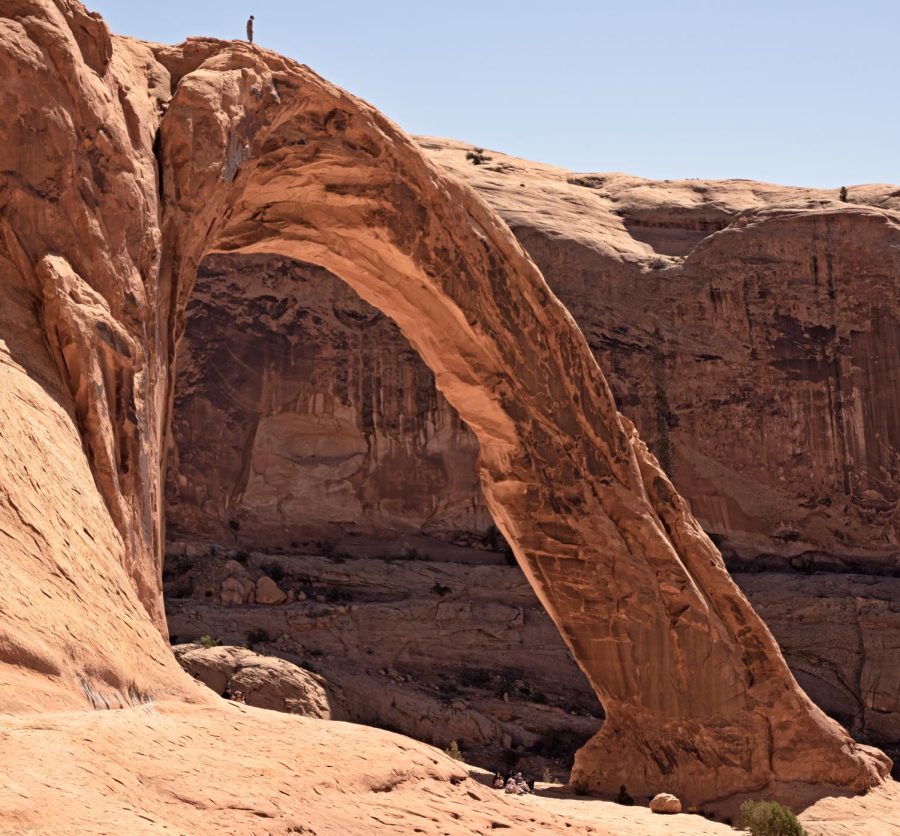National Parks and the U’s Campus: Respecting Native Land
(Photo by Kevin Cody | The Daily Utah Chronicle)
November 3, 2021
“We acknowledge that this land, which is named for the Ute Tribe, is the traditional and ancestral homeland of the Shoshone, Paiute, Goshute and Ute Tribes. The University of Utah recognizes and respects the enduring relationship that exists between many Indigenous peoples and their traditional homelands,” the U’s Indigenous Land Acknowledgement, created in 2020, reads.
According to Thomas Michael Swensen, an assistant professor of ethnic studies and enrolled member of the Tangirnaq Native Village, the U is situated in a state where many native nations have made their home for thousands of years.
“The Ute, Paiute, Northwestern Shoshone, Goshute and Navajo all have traditional lands that intersect with the state of Utah and even the University’s land holdings,” Swensen said in an email interview.
Many national parks in Utah hold sacred Native American land. One example is Rainbow Bridge National Monument, located near Lake Powell in San Juan County, Utah.
“Rainbow Bridge holds material and spiritual significance to the Navajo, Hopi and San Juan Southern Paiute nations,” Swensen said. “Religious freedom is a cornerstone of U.S. democracy but many people have shown long-term disrespect for Native American sacred sites, as well as religious beliefs and practices.”
This disrespect can be observed through the Goblin Valley hoodoo, or boulder, pushing incident from 2013, in which a scout leader was recorded toppling an ancient rock formation in Goblin Valley, a park known for having petroglyphs and other evidence of various Native American tribes.
“Taking care of the parks is super important,” said Stell Cole, a U sophomore and national park frequenter. “It helps us to be able to pass down these special spaces to the generations below us and helps encourage preservation and conservation further.”
Cole, who studies parks, recreation and tourism and environmental and sustainability studies, enjoys spending time in national parks, visiting them multiple times a year.
“[I visit] easily five to ten times a year now that I live out West,” Cole said. “Being from North Carolina, I didn’t have a ton of access to the national parks, as there weren’t many close to me, but out West, I take full advantage. I tend to visit the Tetons as well as the parks throughout Utah the most frequently.”
When she visits national parks, she engages in various activities such as backpacking, camping and hiking, but most of all, exploring their rarely seen parts.
“Being able to go out into the backcountry and explore the less-seen parts of the parks is definitely one of my favorite things to do,” Cole said. “I really appreciate being able to car camp as well, because it is easy and there are lots of facilities for doing so throughout national parks.”
As she spends a lot of her time in national parks, Cole is wary of the impact humans have on them.
“It is concerning to see people’s impacts over places that are not stewarded well like the national parks,” Cole said. “The main thing I think that needs to continue to happen is educating ourselves. The more that visitors take the personal responsibility to educate themselves about the park’s history and nature itself, the better that these places will be able to live on for generations and promote responsible recreation.”
Swensen also believes that educating oneself is important when it comes to visiting national parks, especially when it comes to respecting their ties to Native American culture.
“People should follow the laws and policies that support the protection of the parks,” Swensen said. “Along with this, before they visit a park people should do research and abide to tribal requests to respect areas meaningful to tribes.”
He believes education is a necessary start to gaining a better understanding and respect for Native American history and culture.
“Education is the key,” Swensen said. “There is a benefit to learning about the Native American nations that reside in the Utah region as well as throughout the United States. The ongoing relations between the tribes and states are a fascinating subject. The federal and state governments all have dedicated offices that deal directly with Native Americans.”
Education on Native American history could begin at an administrative level, as described by Swensen.
“State governments have a complicated history with native nations,” Swensen said. “The U.S. Constitution limits the authority states have with Native people and their governments.”
As a result of these limitations, Swensen said state institutions like school districts and universities throughout the nation “have shown varying degrees of commitment” in their efforts to help people understand the historical and political statuses of Native American people.
“When students demonstrate interests in Native American history and culture, institutions may respond by increasing the educational opportunities to engage with this history,” he said.









